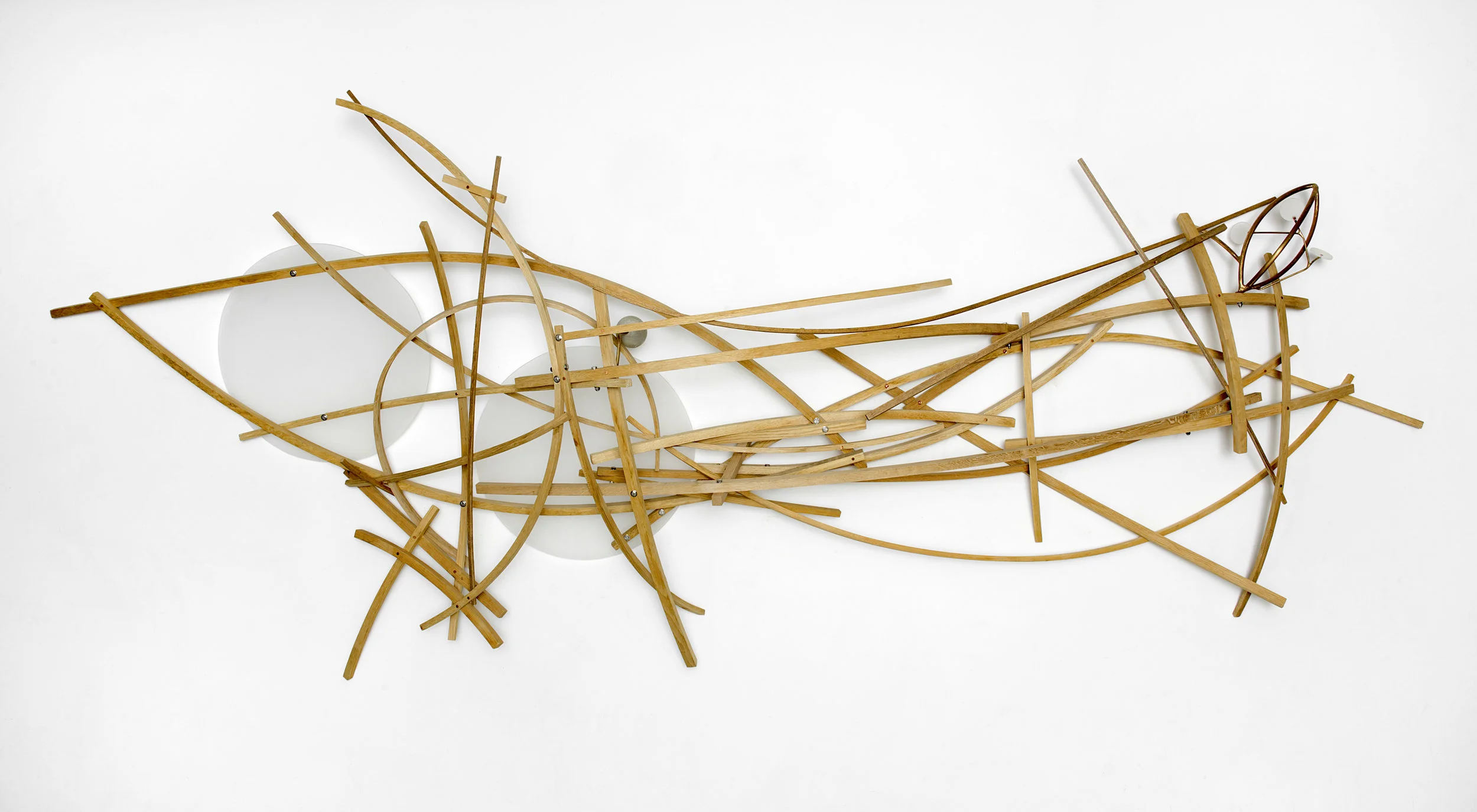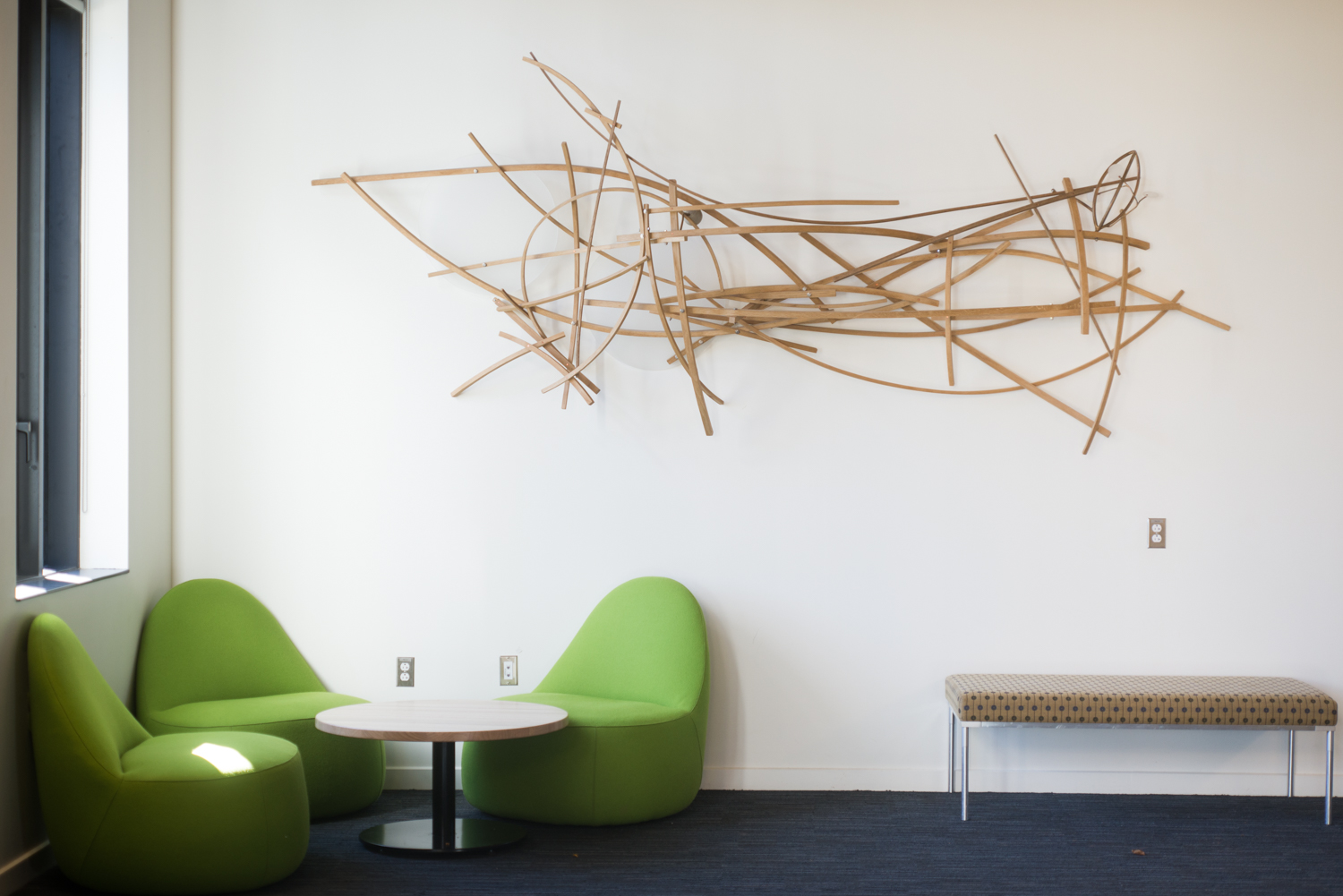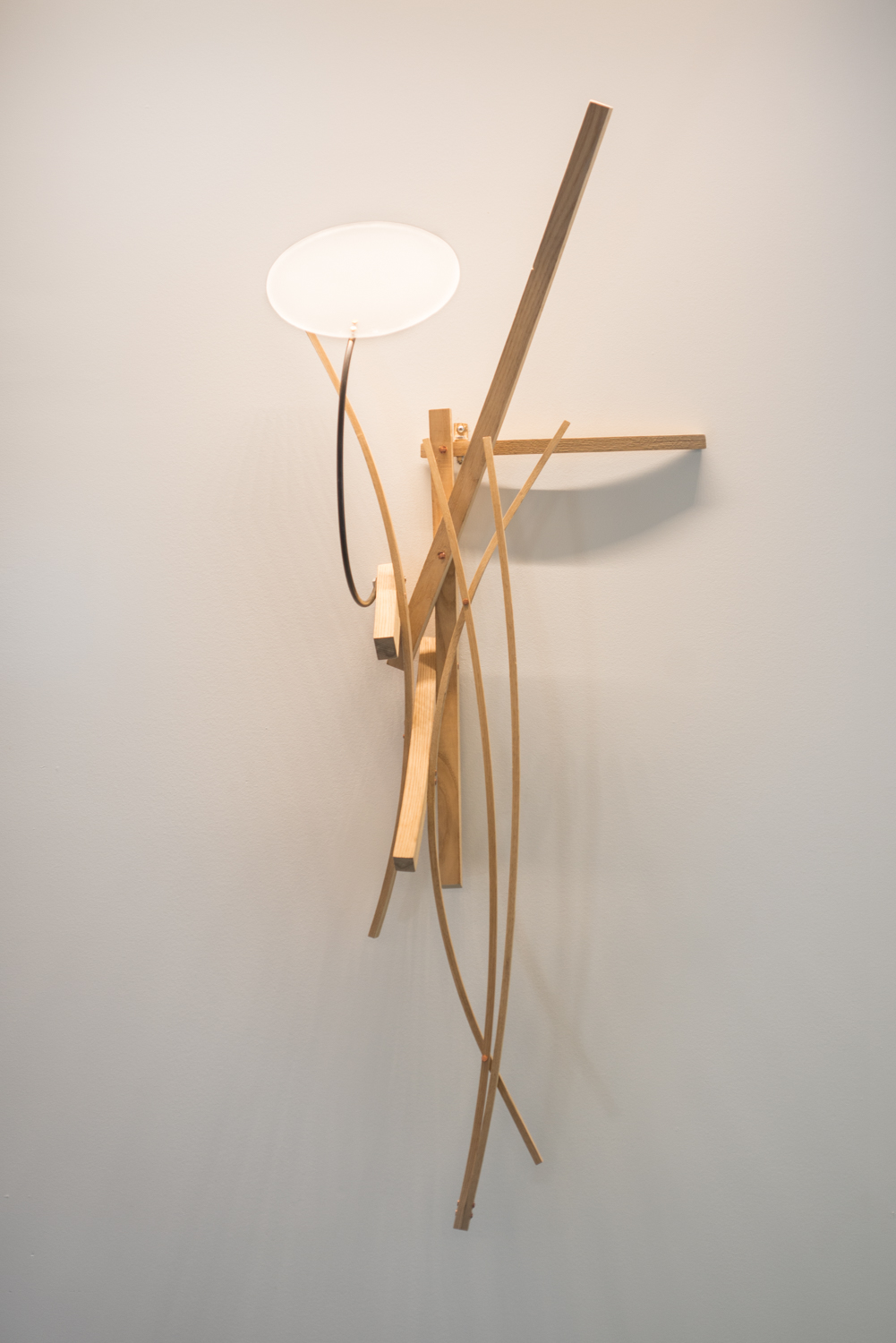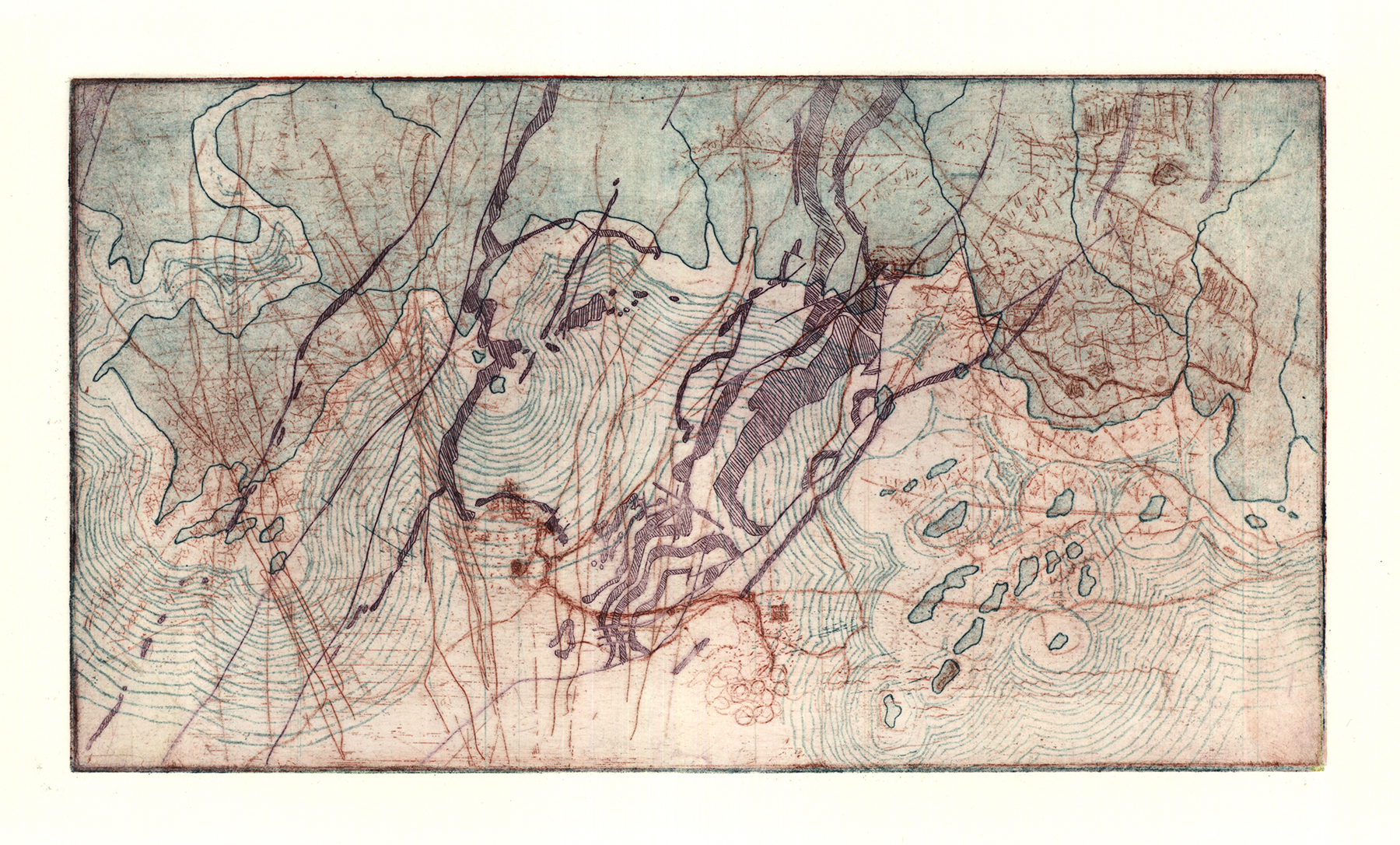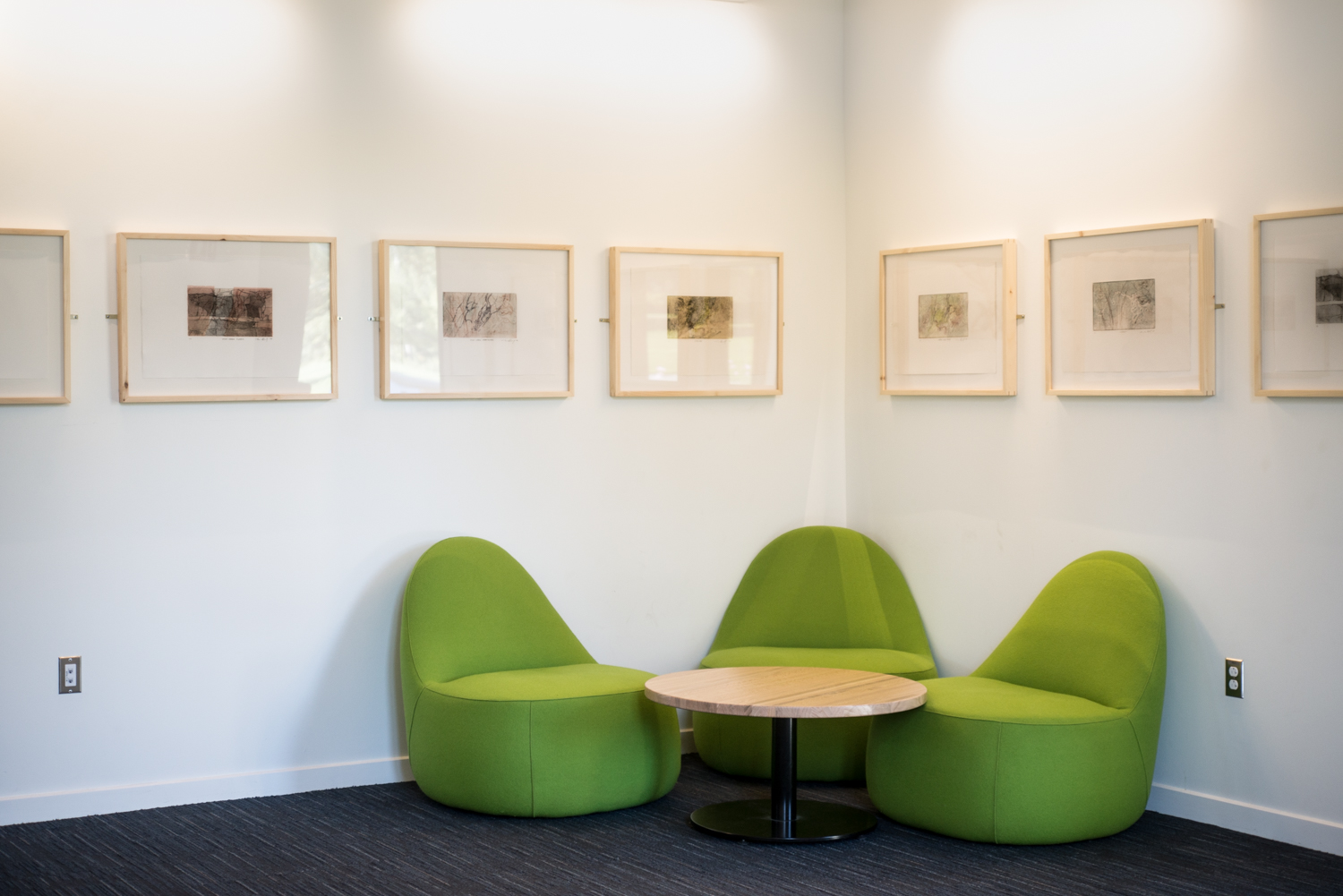William Brayton, Pali, 2013, white oak, bronze, acrylic, Braytoncrete, 89x140x17" Photo by John Polak
Wayfinding: William Brayton & Naomi Darling
R.W. kern center gallery, september 16, 2016 - october 30, 2018
William Brayton’s wall sculptures are a form of architectural inscription in space. Curves, lines, shapes and joins cast shadows, conjure forms, and imply motion through their interaction with the shifting natural and artificial light of the R. W. Kern Center Gallery. Inspired in part by Polynesian nautical stick charts, early navigational aids that mapped ocean swells, the sculptures in this ongoing series take their titles from local wind names drawn from a range of cultures. The materials hold stories of their own: locally-sourced steam bent white oak, with its tight grain and natural rot resistance, has a strong lineage in boatbuilding, furniture and architecture (including the floor of the Kern Center). Elements that appear to be traditional concrete are, in fact, “Braytoncrete”, a lightweight hybrid concrete of Brayton’s devising that uses sawdust as the aggregate. The dialogue at play in these works between sculpture and architecture, natural resources and human ingenuity, tradition and innovation, reflects the underlying ethos of the R.W. Kern Center.
In dialogue with Brayton’s sculptures are Naomi Darling’s small, multi-plate etchings in which the artist layers historical maps and geological surveys of the Connecticut River Valley and Long Island Sound, with markers of her own peripatetic movement in and through each region. Successive geographic and geological strata kindle a sense of deep earth time: torn paper fissures and chine-collé elements also invoke the schisms and molten transformations of the earth’s crust. Personal temporal layers – the path of a favorite walk through the marsh (Songlines, Stony Creek Dreamscapes) or the early traces of a love story (Courtship) – are overlaid on these graphical representations of geological upheaval, combining to create a delicate mapping of memory and place.
Both artists' work allude to forms of geographic navigation and how we orient ourselves in space through personal, historical and cultural systems of knowledge and meaning.
Programs:
Artists’ Talk and Closing Reception, October 25, 2018


